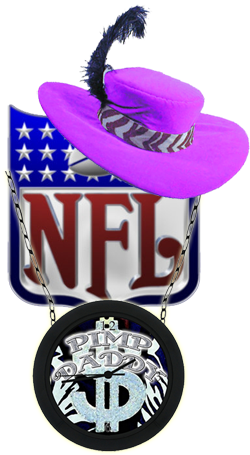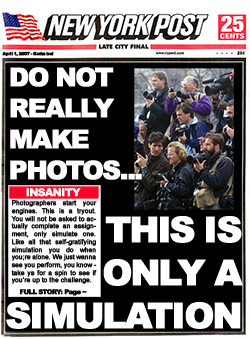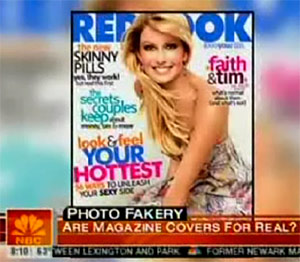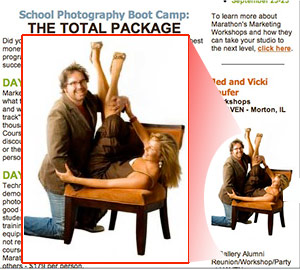US Presswire - Introduction
 For several months now, I've been hearing about US Presswire, how bad they were for photographers, and how, as the Wireimage sports coverage was being absorbed (or dissolved) into Getty Images Sport, clients were looking for "anything other than the AP" said one person familiar with why you are even seeing USPW credit lines.
For several months now, I've been hearing about US Presswire, how bad they were for photographers, and how, as the Wireimage sports coverage was being absorbed (or dissolved) into Getty Images Sport, clients were looking for "anything other than the AP" said one person familiar with why you are even seeing USPW credit lines.
I listened a lot to folks complaining about USPW, and their business practices, from not being paid anything at all, to covering all their own expenses, to not being paid when they saw their work getting play, and so on. No photographers I spoke with were happy about their USPW experience, but a few can be found defending them on Sportsshooter. So, I called Bob Rosato. Over the course of two phone calls spanning over two hours, we covered a lot of ground, and certain issues I was able to resolve by listening to what he had to say. We agreed on many many points - especially about the state of the industry, and a point that Bob made was "This thing was not created so shareholders would profit, it was created so photographers had a platform to get their work out", and we discussed where things were headed. There remained, however, sharp disagreements between he and I about how to handle this evolving industry.
Over the past month, I've been working on collecting information, insights, and so forth, and there hasn't been a lot of positive commentary that's come of it. Covering the World Series last year, and the All-Star games these past two years, I've seen the US Presswire folks in action, and they trend towards being younger, inexperienced photographers, which, on the surface isn't so bad, except that they just don't realize the circumstances that gave someone with that little experience such a grand opportunity. If it was such a great opportunity, why weren't those assignments being covered by seasoned pros? The short answer is - they weren't assignments, they were "we'll get you a credential, and you'll only get paid if we sell a photo..." type of deals. Anyone with any reasoned thinking would run the other way, because they would realize what a disadvantaged position they are in. A number of seasoned pros that Rosato approached either declined, or initially accepted the opportunity, and within a short period of time, parted ways.
What follows are several pieces, broken down for ease of reading.
US Presswire - Introduction
US Presswire - A Conflict of Interest
US Presswire - Friends Don't Screw Friends
US Presswire - Contract Analysis
US Presswire - The Client's Perspective
US Presswire - The Freelancers Perspective
US Presswire - Closing Thoughts
Please post your comments by clicking the link below. If you've got questions, please pose them in our Photo Business Forum Flickr Group Discussion Threads.
 Ok, that's pretty clear then, who owns USPresswire,I thought. When I said to Bob, "so, you're the President", he stopped me, saying "I never said I was the President. I am a background consultant to the company." I said "Bob, your US Presswire contract specifically states on it, on the signature page 'Bob Rosato, President'. That makes you the President. Bob responded "Is my signature on that?" "No, Bob", I said. but it is your contract. So, Network Solutions says you're the registrant of USPreswire.com, your contracts say you're the President, so, what are you?" To which Bob responded "President is a title. I don't respond to titles or anything. I've never said I was the President." I then said, "USPresswire is an LLC, which means that you had to fill out paperwork listing who held various titles, what title does Ed (Bob's brother) hold?" Bob responded, "Ed - his title is - Pick one. Pick a title. This is not a multi-million dollar company, so you can pick any title you want. I'm not sure I understand the significance of your question." I responded "I am trying to determine who holds what position at your LLC. And Bob responded "I am not an out front person for the company. There isn't a soul anywhere who doesn't know that I am involved in the company. There seems to be an agenda to steer this in a particular direction. I don't have to tell you, or anyone else, about the inner workings of the company." No, actually, it has been suggested to me that you, Bob, have gone to certain lengths to distance yourself from the company, or keep people from being aware that you're involved. I was trying to determine where things really were, and what became clear was that you remain trying to keep people from knowing where you stand, so, I can only go by contracts that you say your lawyers drew up that list "Bob Rosato, President" on them, and registration paperwork at Network Solutions that lists you as the registrant, and thus, owner, of USPresswire.com.
Ok, that's pretty clear then, who owns USPresswire,I thought. When I said to Bob, "so, you're the President", he stopped me, saying "I never said I was the President. I am a background consultant to the company." I said "Bob, your US Presswire contract specifically states on it, on the signature page 'Bob Rosato, President'. That makes you the President. Bob responded "Is my signature on that?" "No, Bob", I said. but it is your contract. So, Network Solutions says you're the registrant of USPreswire.com, your contracts say you're the President, so, what are you?" To which Bob responded "President is a title. I don't respond to titles or anything. I've never said I was the President." I then said, "USPresswire is an LLC, which means that you had to fill out paperwork listing who held various titles, what title does Ed (Bob's brother) hold?" Bob responded, "Ed - his title is - Pick one. Pick a title. This is not a multi-million dollar company, so you can pick any title you want. I'm not sure I understand the significance of your question." I responded "I am trying to determine who holds what position at your LLC. And Bob responded "I am not an out front person for the company. There isn't a soul anywhere who doesn't know that I am involved in the company. There seems to be an agenda to steer this in a particular direction. I don't have to tell you, or anyone else, about the inner workings of the company." No, actually, it has been suggested to me that you, Bob, have gone to certain lengths to distance yourself from the company, or keep people from being aware that you're involved. I was trying to determine where things really were, and what became clear was that you remain trying to keep people from knowing where you stand, so, I can only go by contracts that you say your lawyers drew up that list "Bob Rosato, President" on them, and registration paperwork at Network Solutions that lists you as the registrant, and thus, owner, of USPresswire.com. I recently spent some time doing some research on this vests issue to post over at Sportsshooter
I recently spent some time doing some research on this vests issue to post over at Sportsshooter  The race is on! Apparently, tryouts for the NY Post are underway this week.
The race is on! Apparently, tryouts for the NY Post are underway this week.  Back in January,
Back in January,  At the Kodak Professional's ProPass website,
At the Kodak Professional's ProPass website, 